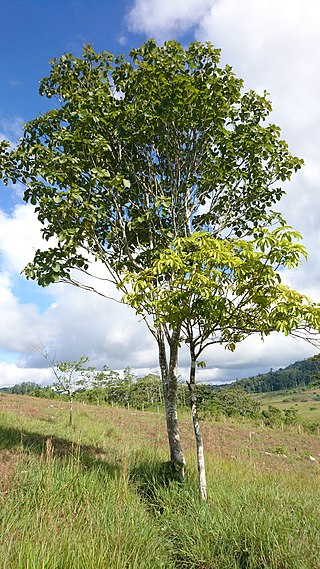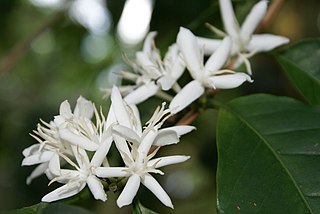
Alseis is a genus of flowering plants in the family Rubiaceae. It was described by Heinrich Wilhelm Schott in 1827. The genus is native to tropical Latin America from southern Mexico to Brazil.

Gaertnera is a genus of flowering plants in the family Rubiaceae. There are at least 85 species distributed across the Old World tropics from Africa to Asia.

Simira is a genus of plants in the family Rubiaceae. It contains the following species:
Remijia is a genus of flowering plants in the family Rubiaceae. Within the family, it is a member of the subfamily Cinchonoideae and the tribe Cinchoneae.
Retiniphyllum is a genus of flowering plants in the family Rubiaceae and contains 20 species. It is the only genus in the tribe Retiniphylleae. The representatives are shrubs or small trees that grow in white sand soils in tropical South America. They are mainly distributed in the Guayana Region (Venezuela) but also occur in the Amazon Basin, the eastern Andes and central and eastern Brasil.

The Cinchoneae are a tribe of flowering plants in the family Rubiaceae containing about 125 species in 9 genera. Representatives are found from Costa Rica to southern tropical America. Species within Cinchoneae are characterized as small trees or shrubs with imbricate or valvate corolla aestivation and often dry capsular fruits. Many species contain alkaloids.

Calycophyllum is a genus of flowering plants in the family Rubiaceae. It was described by Augustin Pyramus de Candolle in 1830. The genus is found from Mexico, Central America, South America and the West Indies.

Pentagonia is a genus of over 40 species of plants in the Coffee or Gardenia family (Rubiaceae}. Pentagonia species are native to Central America and northern South America, and grow in moist tropical forests below 900m. The genus was first described by George Bentham in 1845. The genus is noteworthy for its opposite pairs of huge leaves in a variety of shapes including entire, shallowly or deeply lobed, and even pinnate. These leaves can, in the case of a recently discovered species, be up to four feet long not including the six inch petiole, and up to 2.5 feet in width.

Coussarea is a genus of flowering plants in the family Rubiaceae. The genus is found from southern Mexico to tropical America.

Spermacoceae is a tribe of flowering plants in the family Rubiaceae and contains about 1346 species in 57 genera. Its representatives are found in the tropics and subtropics.

Gardenieae is a tribe of flowering plants in the family Rubiaceae and contains about 586 species in 53 genera.

Coffeeae is a tribe of flowering plants in the family Rubiaceae and contains about 333 species in 11 genera. Its representatives are found in tropical and southern Africa, Madagascar, the western Indian Ocean, tropical and subtropical Asia, and Queensland.

Sabiceeae is a tribe of flowering plants in the family Rubiaceae and contains about 164 species in 7 genera. Its representatives are found in tropical Africa, Madagascar, Sri Lanka, and from Mexico to tropical America. The genus Sabicea is one of the rare genera in Rubiaceae that occurs both in tropical Africa and tropical America.

Ferdinandusa is a genus of flowering plants in the family Rubiaceae, native to the American tropics.
Cordiereae is a tribe of flowering plants in the family Rubiaceae and contains 124 species in 12 genera. Its representatives are found in central and southern tropical America.
Henriquezieae is a tribe of flowering plants in the family Rubiaceae and contains 20 species in 3 genera. Its representatives are found in northern South America.
Sherbournieae is a tribe of flowering plants in the family Rubiaceae and contains 54 species in 4 genera. Its representatives are found in tropical and southern Africa.
Palicoureeae is a tribe of flowering plants in the family Rubiaceae and contains about 817 species in 11 genera. Its representatives are found in the tropics and subtropics.

The Malmeoideae are a subfamily of trees and other plants of the family Annonaceae.













